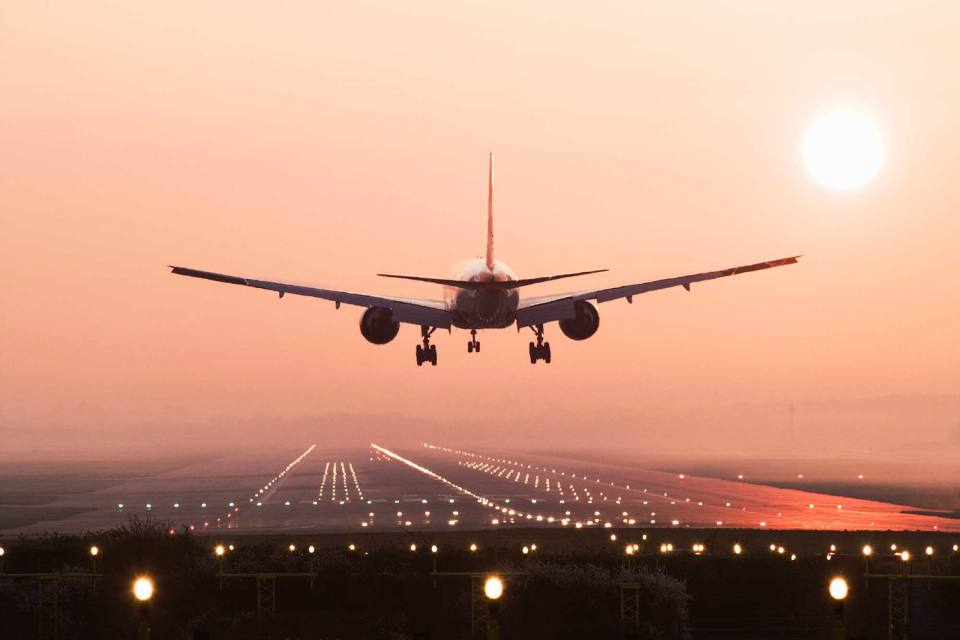Airlines
Over 75 planes of Indian carriers grounded due to engine issues
More than 75 aircraft operated by Indian carriers have been grounded because of maintenance and engine-related issues

More than 75 aircraft operated by Indian carriers have been grounded because of maintenance and engine-related issues, according to aviation consulting firm Corrective and Preventive Actions (CAPA) on Tuesday. Ten to twelve percent of the Indian fleet consists of these aircraft.
Six airBaltic Airbus A220s grounded due to lack of spare parts(Opens in a new browser tab)
In the second half, these “will have a significant impact on financials,” according to CAPA’s India Mid-Year Outlook 2023, which was published on Tuesday. More than 75 aircraft are currently grounded, according to the report, which poses serious difficulties in the context of an already hostile cost environment and increases losses.
It added that serious supply chain problems have a negative impact on capacity and have an effect on both current and upcoming deliveries. These problems are also likely to spread throughout the fiscal year beginning in April 2023, which will have an adverse effect on upcoming deliveries.
U.S. Army Grounds Entire Fleet of Chinook Helicopters(Opens in a new browser tab)
Notably, none of the domestic airlines, not even IndiGo and SpiceJet, two listed companies, have made any public statements about the planes’ grounding to date. According to CAPA, the income from the sale and leaseback financing may be less than anticipated, which could result in liquidity issues as a result of future delivery delays.
Due to the need to extend the leases of older aircraft in the fleet, which have higher maintenance costs and fuel consumption than the new aircraft that would have replaced them, delays in aircraft deliveries may also result in higher unit costs for carriers. A lack of engineers and pilots, for example, is predicted to occur next year, according to the report.

Airlines
Air India Rolls Out A350s for Delhi-New York JFK and Newark Routes

In a major development for North American travelers, Air India has announced the deployment of its state-of-the-art Airbus A350-900 aircraft on two key routes: Delhi to New York and Delhi to Newark.
The service on the Delhi-New York route will commence on November 1, 2024, while the Delhi-Newark route will see its inaugural flight on January 2, 2025.
The introduction of the air india a350 will bring significant enhancements to Air India’s offerings, particularly with the launch of its Premium Economy class. air india retrofit This new class will feature 24 wide seats arranged in a 2-4-2 configuration, providing passengers with extra legroom and a more comfortable flying experience.
Soon, Air India aircraft will feature onboard WiFi & all-new cabins: Click here
“We are encouraged by the positive guest feedback we have received from the domestic deployment of our air india a350 interior to offer our hero product on the Delhi-New York JFK and Delhi-Newark routes. This is a significant leap forward for our U.S. operations that also underscores our commitment to continuous improvement,” said Campbell Wilson, Chief Executive Officer & Managing Director of Air India.
The A350’s Business class will set new standards with 28 private suites, each equipped with full-flat beds, direct aisle access, and personal wardrobes. Economy class will be configured to accommodate 264 passengers in a 3-4-3 layout. Across all cabins, passengers will enjoy the latest Panasonic eX3 in-flight entertainment system, offering over 2,200 hours of content.
Air India’s First A350-900: Interior, Routes, &Inflight Features: Click here
This strategic deployment marks a notable enhancement in Air India’s U.S. operations, with 60% of its flights to the U.S. now featuring new or upgraded cabin interiors. The air india new international routes currently operates 51 weekly flights to five U.S. destinations: New York JFK, Newark, Washington DC, Chicago, and San Francisco.
The revamped cabins, advanced in-flight entertainment systems, and improved service standards represent air india wifi commitment to providing a superior travel experience. “We believe this enhanced offering will solidify Air India’s position as a leading carrier and attract travellers seeking a world-class flying experience between India and the United States,” the airline stated.
Seats on these flights are now available for booking on Air India’s website, mobile app, and through travel agents, ensuring that passengers can easily plan their journeys on these newly upgraded routes.
Air India Economy vs Qatar airways economy: which is best?:Click here
-

 Travel1 week ago
Travel1 week agoAir India to Expand US Operations with Three New Routes After a Decade
-

 Travel2 weeks ago
Travel2 weeks agoWhy We Should Avoid These Stamps in a Passport
-

 Airlines1 month ago
Airlines1 month agoInvestigations Reveal Fake Chinese Titanium in Boeing and Airbus Jets
-

 Tech4 weeks ago
Tech4 weeks agoChina’s CATL Plans 1,800-Mile Electric Plane Launch by 2027
-

 Airport3 days ago
Airport3 days agoTop 10 Largest Airports in the World by Size
-

 Aerospace4 weeks ago
Aerospace4 weeks agoChina’s Fighter Jets Turn Wings into Autonomous Drones
-

 Airlines4 days ago
Airlines4 days agoAir India Rolls Out A350s for Delhi-New York JFK and Newark Routes
-

 Defence3 weeks ago
Defence3 weeks agoBoeing Enhances Chinook with New Engines and Block II Upgrades at $96 Million







